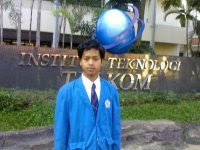New Methodology for Calculating Firefighting Agent Quantities
 The Federal Aviation Administration (FAA) Airport Technology R&D Branch’s Operation of New Large Aircraft Research Program is conducting research to evaluate the current methodology for calculating the total amount of agent needed to combat fires on New Large Aircraft (NLA). Agent quantities, application rates, flow rates and numbers of Aircraft Rescue and Fire Fighting (ARFF) vehicles were established more than 30 years ago based on aircraft of the early 1970’s. The quantities of agent and number of vehicles were determined using formulas related to critical fire area, control time, agent application rate and interior handline attack. The concept of Theoretical Critical Area (TCA) was defined by the length and width of the fuselage, which was used to determine the area around an aircraft that must be maintained to safely permit the evacuation of the occupants. This concept was further refined after analysis of over 100 aircraft fires when the Rescue and Fire-Fighting Panel (RFFP-I) concluded that actual responses only required 2/3 of what was originally determined based on TCA calculations. The Practical Critical Area (PCA) formula was developed to address real world application. The NLA being developed today are taller, heavier and carry more passengers than any aircraft recognized by the RFFP when these formulas were first developed. Extensive use of composite materials, double-deck passenger configurations, fuel location, quantity of fuel and passenger load need to be factored in to the amount of agent available for immediate and follow-on response to an aircraft incident.
The Federal Aviation Administration (FAA) Airport Technology R&D Branch’s Operation of New Large Aircraft Research Program is conducting research to evaluate the current methodology for calculating the total amount of agent needed to combat fires on New Large Aircraft (NLA). Agent quantities, application rates, flow rates and numbers of Aircraft Rescue and Fire Fighting (ARFF) vehicles were established more than 30 years ago based on aircraft of the early 1970’s. The quantities of agent and number of vehicles were determined using formulas related to critical fire area, control time, agent application rate and interior handline attack. The concept of Theoretical Critical Area (TCA) was defined by the length and width of the fuselage, which was used to determine the area around an aircraft that must be maintained to safely permit the evacuation of the occupants. This concept was further refined after analysis of over 100 aircraft fires when the Rescue and Fire-Fighting Panel (RFFP-I) concluded that actual responses only required 2/3 of what was originally determined based on TCA calculations. The Practical Critical Area (PCA) formula was developed to address real world application. The NLA being developed today are taller, heavier and carry more passengers than any aircraft recognized by the RFFP when these formulas were first developed. Extensive use of composite materials, double-deck passenger configurations, fuel location, quantity of fuel and passenger load need to be factored in to the amount of agent available for immediate and follow-on response to an aircraft incident.Using the existing methodology, the Airbus A340, Airbus A380, Boeing 777 and Boeing 747 would all require roughly the same quantity of extinguishing agent in a major aircraft fire even though the characteristics of these four aircraft vary greatly in fuel load, fuel tank locations, cabin levels, passenger capacity and aircraft construction. The TCA/PCA methodologies may not be accurate or sufficient for today’s wide body or double-deck aircraft in the event of a major fire.



Tidak ada komentar:
Posting Komentar